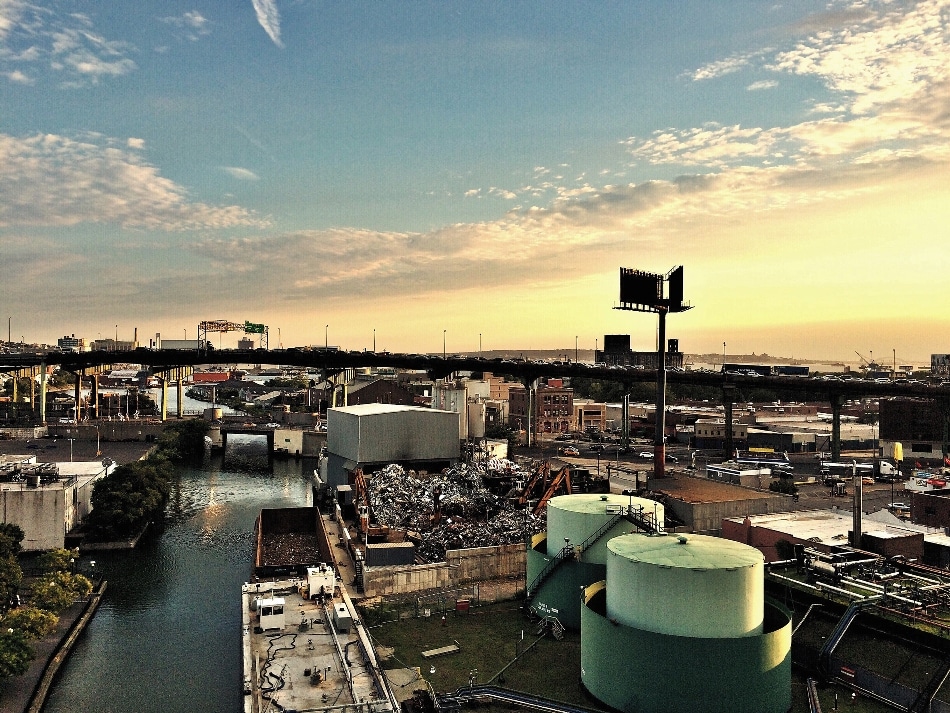Feb 21 2019
The Environmental Protection Agency (EPA) has reported that nearly 53 million people in the United States, including approximately 18% of the U.S. children, reside less than three miles from a Superfund site.
 Superfund sites, such as the Gowanus Canal in New York City, have been identified by the EPA as being polluted by highly dangerous wastes. A Purdue water and soil analysis technology may help improve cleanup and monitoring at contaminated Superfund sites across the United States. (Image credit: Stock photo)
Superfund sites, such as the Gowanus Canal in New York City, have been identified by the EPA as being polluted by highly dangerous wastes. A Purdue water and soil analysis technology may help improve cleanup and monitoring at contaminated Superfund sites across the United States. (Image credit: Stock photo)
In 1980, the Superfund program was initiated by Congress to pay for the cleanup of land contaminated by highly toxic wastes, as identified by the EPA.
Presently, there are more than 1300 such waste sites everywhere in the United States. According to the Strategic Environmental Research and Development Program (SERDP), over 80% of these sites and over 3000 similarly hazardous Department of Defense sites contain chlorinated solvents. Previously, these chlorinated solvents were extensively used in manufacturing operations and industrial cleaning, which led to a major contamination threat to groundwater supplies.
A new method to detect the existence of these dangerous solvents in soil and water has been developed by a research team from Purdue University, including former Purdue researcher Chike Monwuba, guided by Joe Sinfield, an associate professor in Purdue’s Lyles School of Civil Engineering. This method has the ability to improve the efficiency of remediation efforts and monitoring operations.
Our method is accurate, quick and can detect very low concentrations of the target contaminants.
Joe Sinfield, College of Engineering, Purdue University
Sinfield is director of the Innovation and Leadership Studies Program of the College of Engineering.
At first, the Purdue team used Raman spectroscopic technique to directly find the chlorinated solvents. This method involves analyzing the sample using a laser source, where the chemical structure of the sample is determined by observing the scattered light.
Traditionally, one would look for specific frequencies of scattered light that are indicative of the presence of the chemical of interest. However, after conducting several broad spectral studies of the target compounds in simulated field samples, our team noticed that the light scattered by the water itself was affected by the presence of the chlorinated solvents—in fact more so than the light scattered by the molecules of the target chemical.
Joe Sinfield, College of Engineering, Purdue University
This study led to the development of a sensing mechanism that was about 10 times more sensitive than the traditional methods that include direct observation of the solvents themselves.
According to Sinfield, the Purdue method has the potential to detect chlorine-based compounds in other conditions, including chemicals such as fluorine, bromine, or iodine in various application spaces.
This study is in tandem with Purdue’s Giant Leaps celebration, which recognizes the university’s international achievements in sustainability and health. This celebration is part of Purdue’s 150th anniversary. These are two of the four themes of the yearlong celebration’s Ideas Festival, which was developed to present Purdue as an intellectual center for solving real-world problems.
The scientists worked with the Purdue Office of Technology Commercialization to obtain a patent for the new method. Furthermore, they are seeking partners for developing it further.